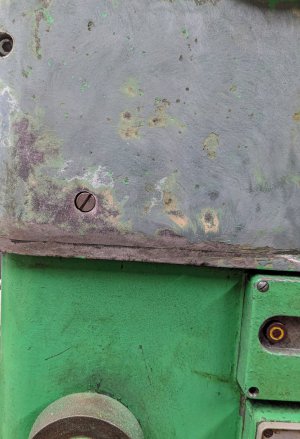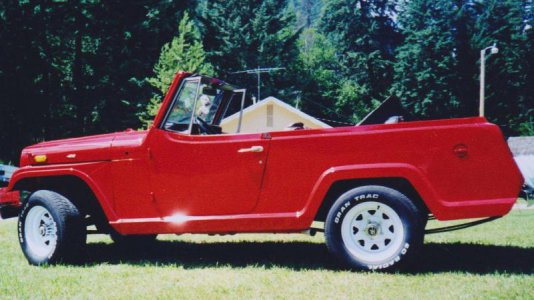All machine tools should be selected to fulfill requirements driven by the things the person actually intends to do with them.Now you know why some guys with Real DPs or other metal working machines find it hard to bite their tongue when someone asks if a DP with minimum 400 rpm will suffice for "hobby" machining.
But now you're gonna learn there is a downside to owning a heavy machine like yours.
I see you are holding that big drill bit in a chuck.
After you twist the straight shank off of a couple of drill bits you will start buying taper shank bits. And there's no end to that.

For me, a drill press is a convenience tool. Its purpose is to make it fairly easy and quick to drill the usual holes for clearance and threaded holes for the sorts of fabrications that people like us (hobbyists) actually make. For me, that would only very rarely exceed holes for half-inch bolts and screws.
Precision holes, holes that are precision openings for things like bearing mounts or alignment pins, and holes for constructions so massive a half-inch bolt isn’t enough need a whole different solution. No drill press can locate a hole with real precision. With scribe lines and an optical locator punch one might get within, say, 5 thou. Good technique on a decent drill press can achieve that.
For holes much smaller than about 1/8”, one also needs a different solution. The requirements for that can’t be fulfilled by a standard drill press. But they also can’t be fulfilled by drilling machines like the Arboga.
So, we have four use cases leading to very different requirements:
1. Holes in steel and iron for bolts larger than 1/2”. Requirements include high power, massive rigidity, and RPM down to 2 digits. It may also need power feed and taper-shank drills (or collets).
2. Holes in metals that need location precision better than, say, 0.005”. My Jacobs chuck only claims precision to 0.004, so a requirement for this use case will be drills held in collets.
3. Holes smaller than 1/8”. These require precision to avoid breaking drills as much as anything. It will need speeds into the five digits with the smallest drills, though speeds into the middle four digits will usually work.
4. Holes for bolted or screwed connections using fasteners from, say, #8 through 1-2”. This is the vast majority of what most home fabricators do. A 9/16” drill needs speeds at least down into the 200’s for mild steel.
In a production shop, the first use case might be a reason to own a specialized high-power, low-speed drilling machine. For me, the preferred alternative would be a mill, which also fulfills those requirements but which earns its real estate in a home shop with a lot more versatility. The very occasional need for this use case can be accommodated by a quality drill press with slower speeds and careful technique. A magnetic drill press with annular cutters might also cover some tasks in this use case.
The second use case is best served by a mill with a precision table.
The third use case can be addressed by a mill, but a production shop may find real value in a specialized sensitive drill press. A collet-mounted sensitive drill attachment might also work well in a larger mill.
The fourth use case is what drill presses were made for. But the old American-made presses need their slow-down kits, or their wide speed range plus a slow motor, to fully address requirements here. My Delta 15” press with an 1140-RPM motor will get down well under 300 RPM, and has about the same range as a three-pulley press. It’s not stiff enough for really big holes, or precise enough for drills smaller than 1/16” (there being no collet option). But it’s fine for the vast majority of the holes I need for bolted connections in home-shop fabrications.
The Arboga that the OP found is awesome and if I’d found the right deal in one locally I might have gone for it, too. It will certainly fulfill the requirements of that fourth use case. But what I really need for those other three use cases is a mill, and a drill press is not that. A specialized drilling machine eats into mill money and shop real estate for me, but without doing the many other things a mill will do. A drill press has to be convenience-priced.
Rick “aiming at the original question” Denney


